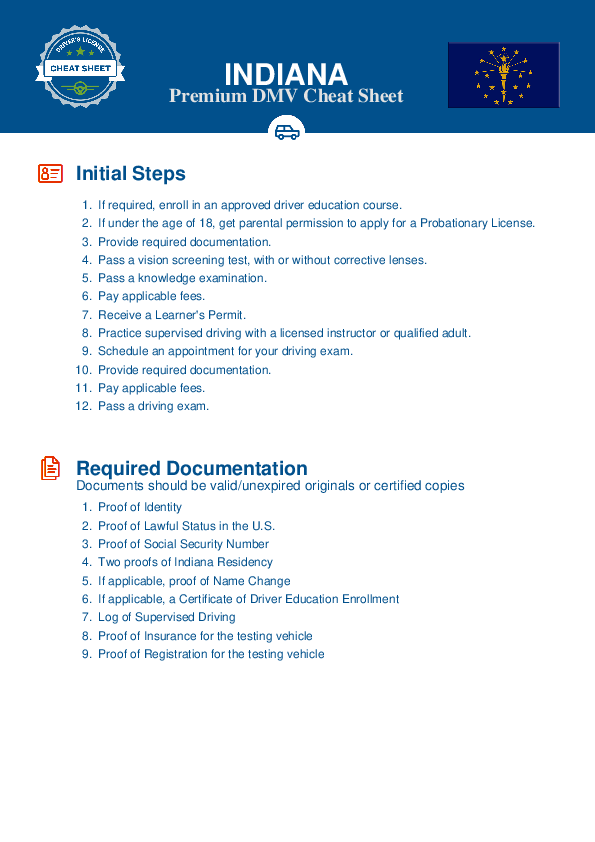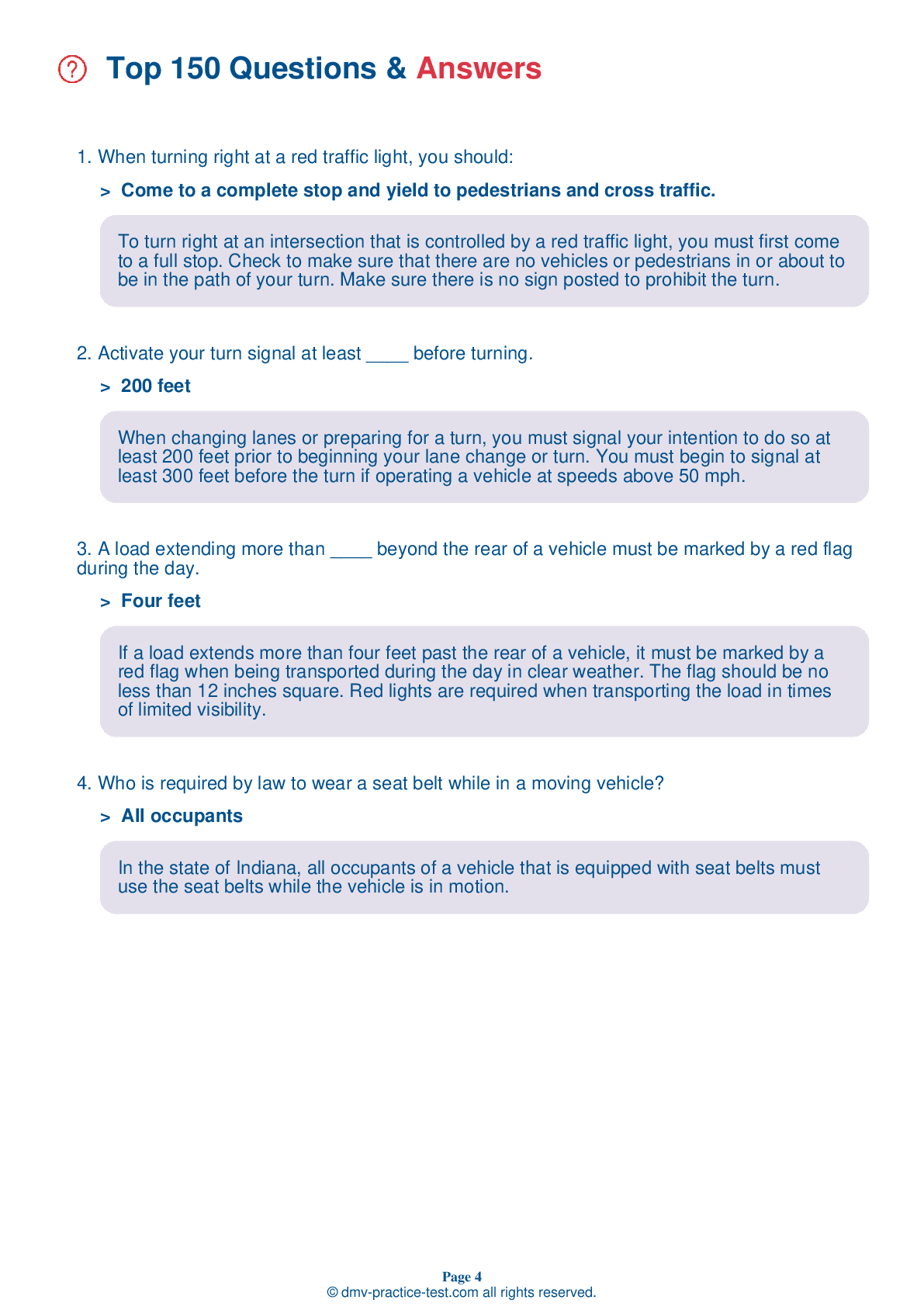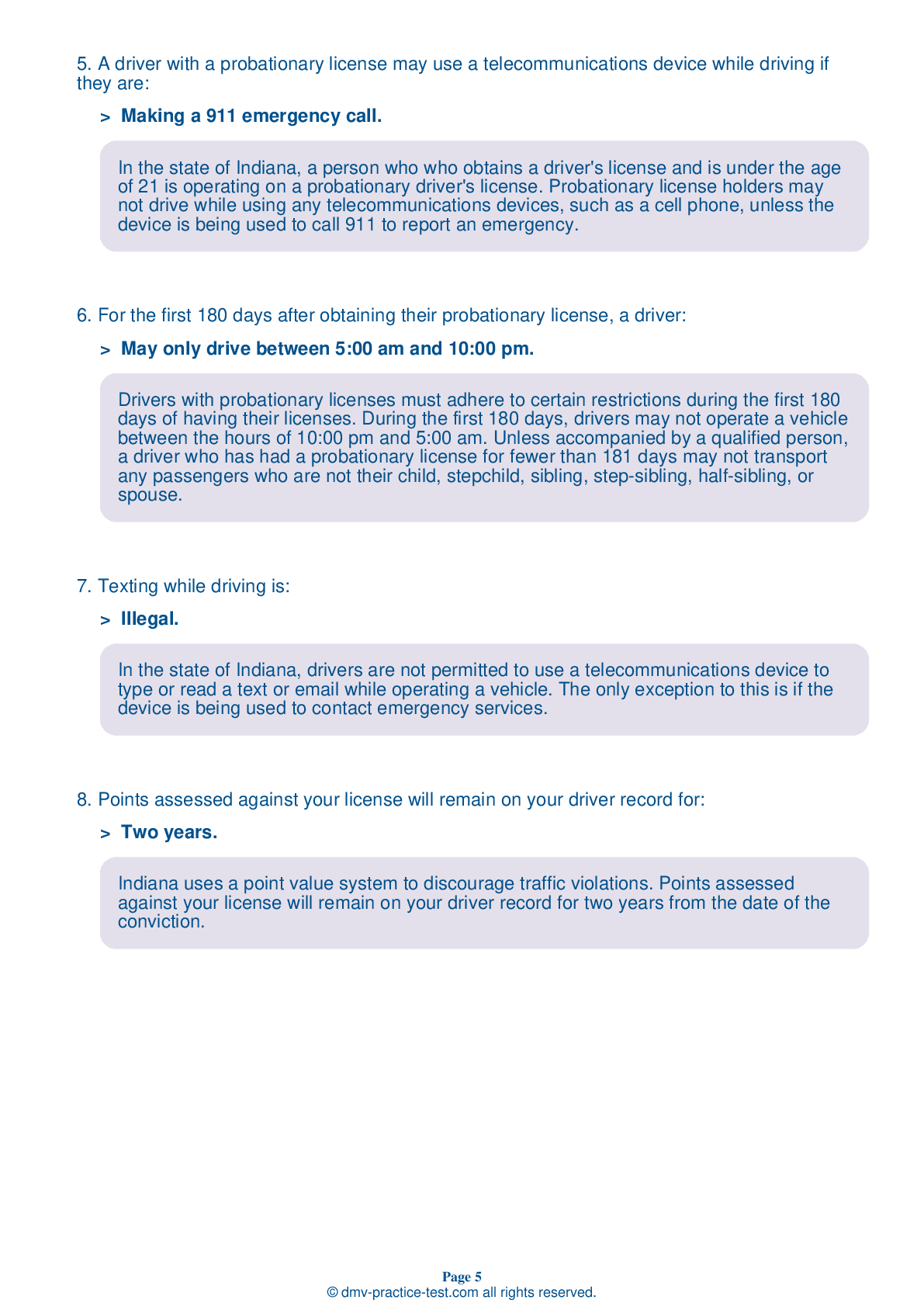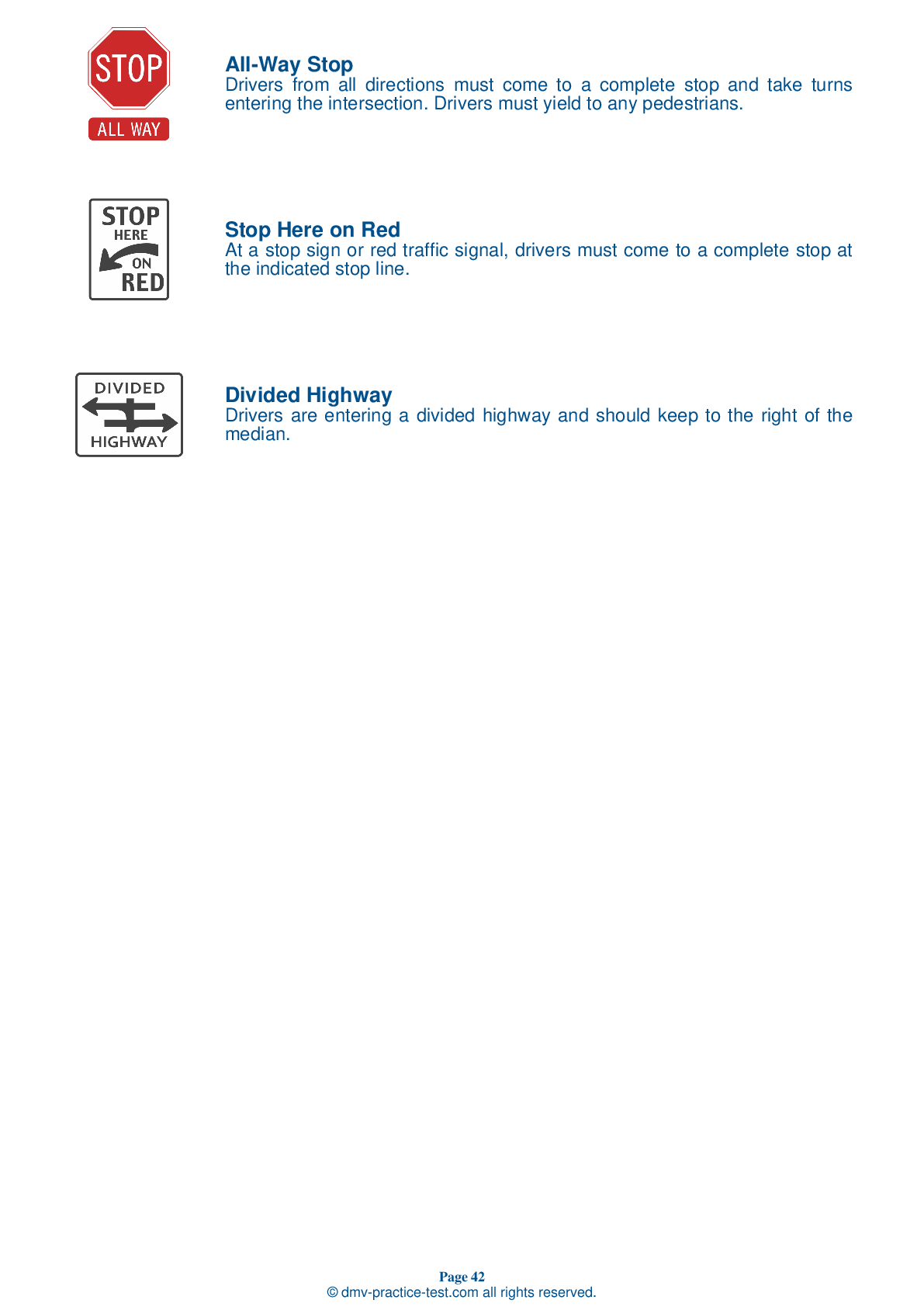FREE Indiana DMV Practice Test #18 Page 3 of 5
This set of Indiana DMV practise tests has been updated for January 2025. It includes questions based on the Indiana Driver Handbook's most significant traffic signals and laws for 2025. Use actual questions that are very similar (often identical!) to the DMV driving permit test and driver's licence exam to study for the DMV driving permit test and driver's licence exam.
On the practise exam, each question gets a tip and explanation to help you remember the concepts. The written component of the official Indiana DMV test will include questions about traffic rules, traffic signs, and driving statutes, as well as information from the Driver Handbook.
To obtain a passing grade, you must correctly answer 44 of the 50 questions. Take our DMV practise exam to help you prepare for your Indiana instruction permit or driver's licence.
The DMV exam is available in several languages.
Using any kind of testing assistance will result in an automatic fail, and the DMV may take additional action against your driver's licence, so stay away from it.
17 . The most effective safety restraints in a traffic crash are:
Safety belts can double your chance of surviving a crash and more than double your chance of avoiding serious injury. Airbags, when used properly with safety belts, provide additional protection in a front-end crash. You should wear both shoulder and lap belts.
18 . This sign means:
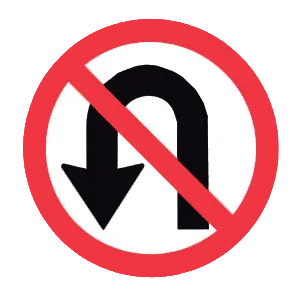
This sign prohibits U-turns. Do not make a U-turn where this sign is posted.
19 . Smoking and preparing to smoke while driving:
Smoking while driving can create dangerous distractions by causing you to take your hands off the wheel and/or your eyes off the road.
20 . To check your blind spot before changing lanes:
To check your blind spot before changing lanes, you should look over your shoulder in the direction that you plan to move.
21 . Double solid yellow lines painted down the middle of the road mean:
Double solid yellow lines in the center of the road mean that passing is not allowed from either direction. You may not cross the lines unless you are making a left turn or passing pedestrians, bicyclists, and riders of scooters or skateboards when the opposite lane is clear and you can pass safely.
22 . This sign means:
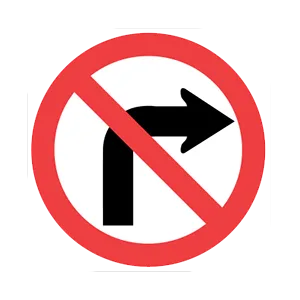
A sign with a red circle and slash over a symbol indicates that the action represented by the symbol (in this example, a right turn) is not allowed.
23 . This sign means:

Construction zones pose dangers to both drivers and construction workers. Orange highway construction signs warn drivers to be careful when encountering construction zones. This sign tells drivers that there are added penalties when driving irresponsibly in work zones.
24 . Look over your shoulder to check your blind spot when:
Look over your shoulder to check your blind spot every time you want to change your vehicle's position. If you are turning, changing lanes, or pulling toward or away from a curb, you should check your blind spots.
25 . The correct way to use a freeway exit ramp is to:
When using a freeway exit ramp, do not slow down until you move onto the exit ramp.
26 . Defensive driving is:
You drive defensively when you identify dangerous driving situations and take action before an accident occurs. Defensive driving helps prevent conflicts with aggressive, offensive, discourteous, careless, inattentive, impulsive, ignorant, or intoxicated drivers or pedestrians.
27 . A traffic light displaying a green arrow and a red light means that:
If a green arrow is shown with a red light, you can only drive in the direction of the arrow and only if the intersection is clear.
See the exact questions that will be on the 2025 Indiana DMV exam.
99.2% of people who use the cheat sheet pass the FIRST TIME
LT gives us an insight on how the cheat sheet provided her with all the study questions she needed before taking her test.
Joe initially studied with the handbook and failed his test, he eventually found us online, studied and pass his test the first time around.
